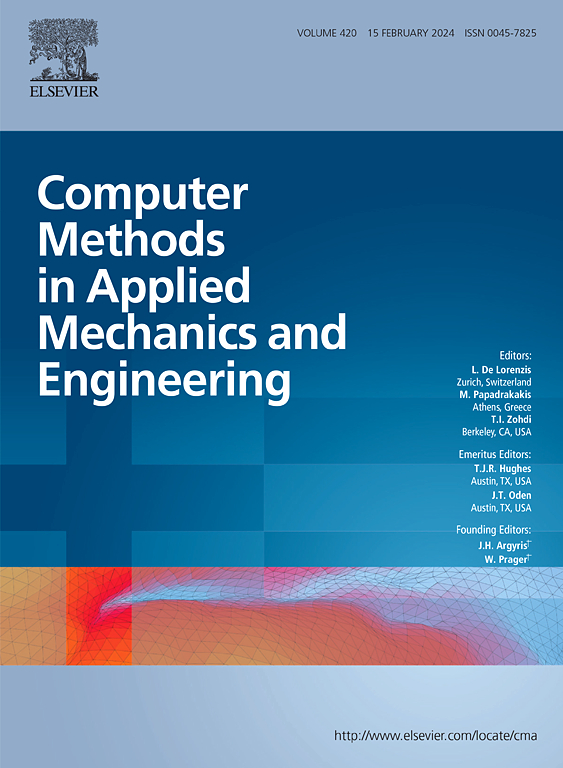Hemodynamics modeling with physics-informed neural networks: A progressive boundary complexity approach
IF 6.9
1区 工程技术
Q1 ENGINEERING, MULTIDISCIPLINARY
Computer Methods in Applied Mechanics and Engineering
Pub Date : 2025-02-21
DOI:10.1016/j.cma.2025.117851
引用次数: 0
Abstract
Hemodynamic analysis is essential for assessing cardiovascular health. Computational fluid dynamics (CFD) methods, while precise, are computationally expensive and lack transfer learning capabilities, requiring recalculation for varying boundaries. Machine-learning methods, despite powerful data-fitting abilities, heavily rely on labeled datasets, limiting their use in clinical settings where data is scarce. To alleviate data dependency, Physics-Informed Neural Networks (PINNs) embed physical laws directly into the loss function, allowing model parameter transfer across varying geometries. However, traditional PINNs struggle with complex domains like stenosed vessels, leading to inefficiency and reduced accuracy. To tackle this challenge, we propose the Boundary Progressive PINN (BP-PINN). By introducing boundary complexity, BP-PINN reconstructs vascular boundaries at varying smoothness levels. Training begins with simple models and progressively incorporating boundary details to capture complex flow characteristics. Without any labeled data, BP-PINN was successfully applied to 22 patient-specific cases, achieving L2 errors of 0.036 for velocity and 0.057 for pressure compared to CFD ground truth. Furthermore, compared to fractional flow reserve (FFR), the invasive gold standard for diagnosing myocardial ischemia, the non-invasive FFR predicted by BP-PINN attained the highest overall diagnostic accuracy of 90.9 %, outperforming vanilla-PINNs (81.8 %). Additionally, BP-PINN leveraged pretrained models with similar boundary complexities, enabling efficient stent preoperative planning. The proposed method evaluated the effects of five stenting strategies on the hemodynamic environment, achieving an average computation time of under 3 min per case. Finally, the framework was extended to solve heat equation, Poisson equation and Helmholtz equation in irregular domains, demonstrating superior accuracy compared to baseline methods.
求助全文
约1分钟内获得全文
求助全文
来源期刊
CiteScore
12.70
自引率
15.30%
发文量
719
审稿时长
44 days
期刊介绍:
Computer Methods in Applied Mechanics and Engineering stands as a cornerstone in the realm of computational science and engineering. With a history spanning over five decades, the journal has been a key platform for disseminating papers on advanced mathematical modeling and numerical solutions. Interdisciplinary in nature, these contributions encompass mechanics, mathematics, computer science, and various scientific disciplines. The journal welcomes a broad range of computational methods addressing the simulation, analysis, and design of complex physical problems, making it a vital resource for researchers in the field.

 求助内容:
求助内容: 应助结果提醒方式:
应助结果提醒方式:


